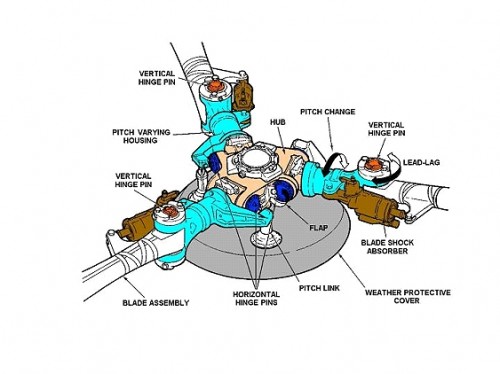|
|
Popular Science Blog has an interesting article about a Chinook Helicopter ground resonance test. The videos are amazing! To learn more about ground resonance the chinook-helicopter site has some good reading and lots more videos of this bird in action.
“According to PopSci’s aviation expert, Bill Sweetman, helicopters are prone to resonant effects, which is why resonance ground testing (as seen in this video) is a standard part of chopper R&D. If both blades in a twin-rotor helicopter share the same heavy vibration and the engine mounts aren’t rock-solid, the energy generated can actually make the motors start moving around the engine mounts, and the next thing you know, that bird’s goose is cooked.
Ground Resonance is an aerodynamic phenomenon associated with fully-articulated rotor systems. “Ground” implies the airframe must be in contact with the ground. “Resonance” refers to the natural vibration frequency of the airframe resulting from the design and manufacturing process. Each part of the airframe, including the rotor system, vibrates at a certain frequency. During the development process, engineers will design the helicopter in such a way as to avoid having the fuselage and rotor system vibrate in sympathy with each other. Otherwise, the helicopter would be difficult to control. Instability can occur when the lead-lag frequency of the rotor couples with one of the natural frequencies of the fuselage, usually due to a shock to the airframe.”
Looks like this helicopter can a bit difficult to fly…
|
|


Permalink
Perhaps difficult to fly, but when flow correctly, oooh…
Permalink
(1) The helicopter landing on the ship is not a CH-47 Chinook, it is a CH-46 Sea Knight which is a smaller version flown by the USMC, though with similar appearance.
(2) I’m not sure exactly what the purpose is in putting up a clip showing two aircraft crashes, as neither of them had anything to do with ground resonance and instead are just showing the death of several pilots and crewmembers.
The ground resonance thing is neat and worth seeing. But sliding in the equivalent of snuff films is borderline offensive.
Permalink
Hi Austin,
Thanks for the info, I didn’t realize the other helicopter was different.
The only purpose of the two other videos was just to demonstrate how difficult these big helicopters must be to fly. I looked at the footage in the same way I would look at a bad race car crash. No one wants it to happen but it is bound to occur.
Permalink
As helicopter mechanic for USMC (uh-1n & ah-1w)I can tell you that the vibration these airframes are exposed to during normal operations each and every flight is incredible. Considering these aircraft (ch-46) are all at least fifty years old, it’s amazing in many regards that they are still able to conduct missions reliably.
The saying in the CH-46 community is that “If it’s leaking, it ain’t broke.” Meaning, if the hydraulic system is dripping on your head in-flight, you know that the system has hydraulic fluid. Don’t worry…unless it stops leaking.
Finally, these things are scary as hell to ride in. No such thing as a CH-46 “joy-ride”.